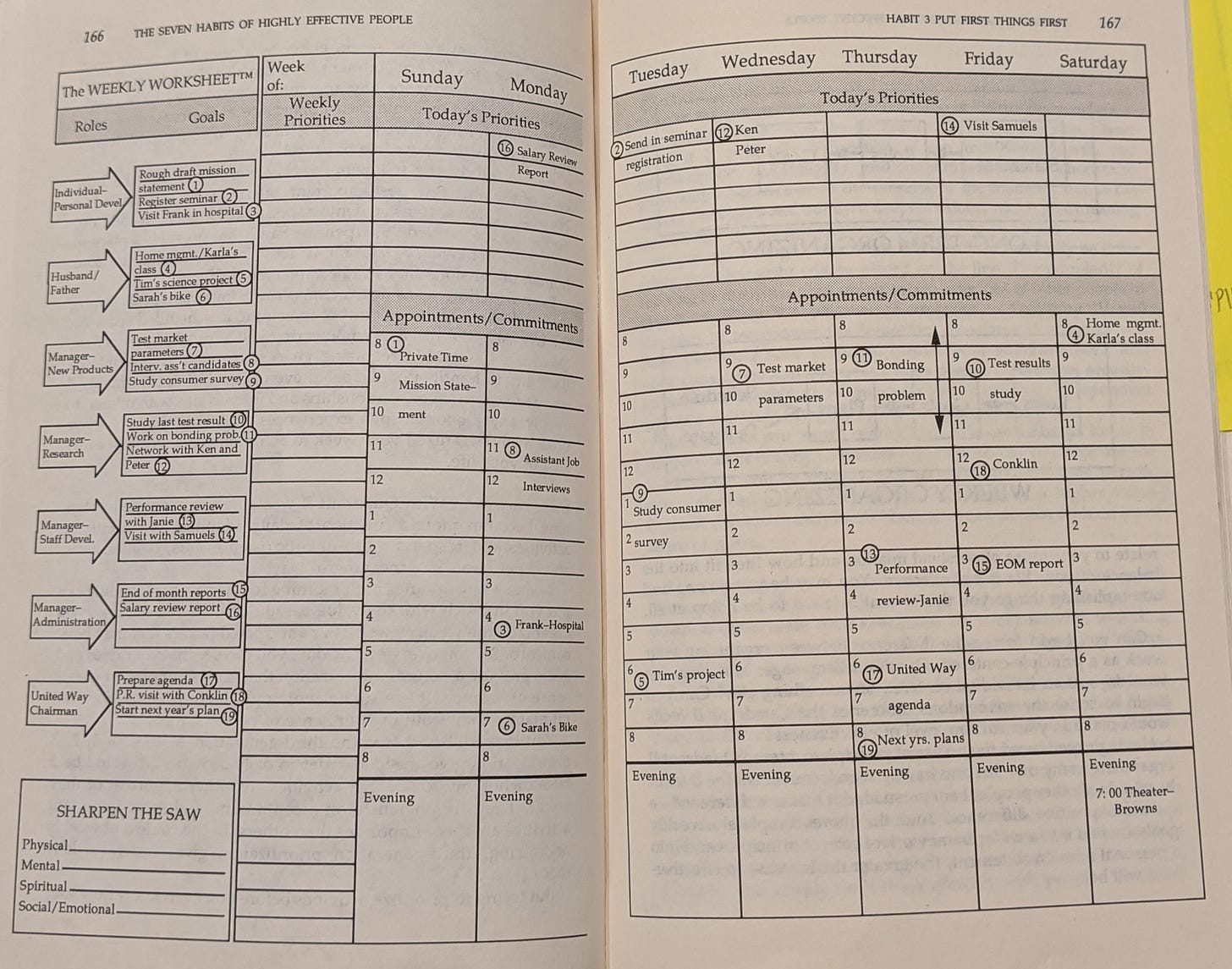Yesterday we got a primer on setting up a Q2 tool, and the factors to think about when setting it up. Today, we go over the 4 step process for becoming a Q2 self-manager that Covey provides.
To put it simply, yesterday was selecting the tool, today is using the tool.
The 4 Steps
Identifying Roles
If you haven't really given serious thought to the roles in your life, you can write down what immediately comes to mind.
You don't need to worry about defining the roles in a way that you will live with for the rest of your life - just consider the week and write down the areas you see yourself spending time in during the next seven days.
Selecting Goals
The next step is to think of two or three important results you feel you should accomplish in each role during the next seven days. These would be recorded as goals and at least some of these goals should reflect Q2 activities.
Ideally, these short-term goals would be tied to the longer-term goals you have identified in conjunction with your personal mission statement.
Scheduling
Now you can look at the week ahead with your goals in mind and schedule time to achieve them. Sunday (or some other day of the wee that is special to you, or your circumstances) is often the ideal time to plan your more personally uplifting activities, including weekly organizing.
Look at the example schedule, below, to see how much time remains open, even with 19 separate goals scheduled.
Daily Adapting
With Q2 weekly organizing, daily planning becomes more a function of daily adapting, of prioritizing activities and responding to unanticipated events, relationships, and experiences in a meaningful way.
Taking a few minutes each morning to review your schedule can put you in touch with the value-based decisions you made as you organized the week as well as unanticipated factors that may have come up.
The Weekly Worksheet

Here is the example Covey provides in the book. We see on the very left is a section where roles have been identified, and 2-3 goals are identified for each role. There are 19 in total. We then see those 19 goals planned out for the week.
With this approach, one can easily move things around as necessary, making days structured, yet flexible.
Returning once more to the computer metaphor, if Habit 1 says "You're the programmer" and Habit 2 says, "Write the program," then Habit 3 says "run the program," "Live the program."
It is not an easy switch to make. There has already been a lot of work, just with the first two habits. Failures and frustrations are sure to be experienced as we first set this system up. Covey has a good quote to keep in mind if you find yourself stumbling and frustrated...
Remember, frustration is a function of our expectations, and our expectations are often a reflection of the social mirror rather than our own values and priorities.
I was thinking of continuing on and explaining the final section of Habit 3, delegation. However, I will save that for a separate post, likely next Tuesday.
Tomorrow I will be back with my own attempt at identifying my roles and goals and setting up a weekly plan.


